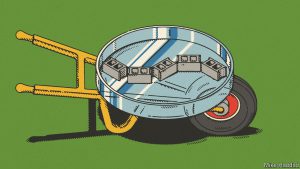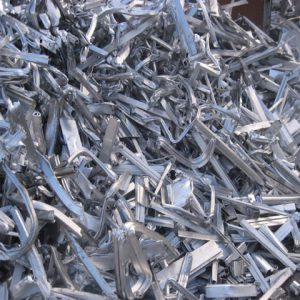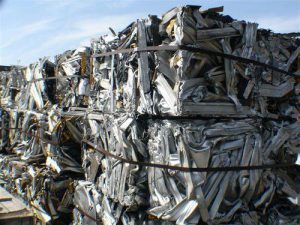A second wind for German industry?
Mar 13th 2010 |
Tesla against Tüftler
THE Roding Roadster, a sports car unveiled at last September’s Frankfurt motor show, has a powerful motor and lightweight construction that promise a thrilling ride. But at Munich’s Technical University (TUM), which the Roding’s designers attended, there is even more buzz about the Tesla, a battery-powered car from California. It shows that electro-mobility “could be fast and fun”, says Markus Lienkamp, who teaches car technology at TUM. Annoyingly, Tesla opened a dealership in Munich on BMW’s doorstep.
Germany invented the modern internal-combustion engine and intends to be a leader in any future automotive technology. It has helped to spread the idea that modern life can be transposed into planet-friendly technology. The government’s promise to put 1m electric cars on the road by 2020 is one of many initiatives to ensure that Germany cashes in. So Tesla’s brash entrance into the green enclosure was met with a mixture of derision and fear. Surely slapdash American engineering will be put to shame by the inventive perfectionism of the German Tüftler, car folk mutter. But that is a hope, not a certainty. Mr Lienkamp welcomes the threat. “When a German engineer gets angry,” he advises, “watch out.”
Germany is confused about its technological identity. On the one hand it embraces the new. It ranks fourth among countries in the number of patents filed per person and comes close to the top in international surveys of innovation. On the other hand it has few enterprises emerging from garages to wreck everyone else’s business model. The closest German equivalent to Google is SAP, a software firm that is pushing 40. Germans who want to convert bright ideas into riches go to America, says McKinsey’s Mr Mattern. Only 4% of the working-age population is engaged in early-stage entrepreneurial activity, according to the Global Entrepreneurship Monitor, against America’s 8%.
How much does that matter? Germany has done pretty well with cars, machines and chemicals, medium-tech products as measured by the share of turnover invested in research and development (R&D). Just because innovation is hidden does not mean it is not there. “A BMW has more software than the space shuttle,” says Manfred Broy, a professor of information technology at TUM. Germany is in pole position in several fast-growing “green tech” areas, including renewable energy and automotive efficiency. But the arrival of the Tesla shows that Germany could still lose the race.
Sharpen up
Decision-makers are haunted by the thought that the country’s only marketable raw material is brainpower and that the number of brains is shrinking. Germany underspends on education and R&D (see chart 4), and just a fifth of scientists and engineers are aged 25-34, the lowest share in the EU. As catalysts of new ideas, German universities lag behind American and British ones. Venture capital had a late and inauspicious start, just before the dotcom bubble burst in 2000, which stunted its subsequent growth.
Mrs Merkel, herself a physicist, has attended to these deficits with methodical doggedness. Her 2005-09 grand coalition stepped up support for government-funded research institutes and launched an “excellence initiative” to promote elite universities and programmes. Her new coalition plans to spend an extra €12 billion on education and to offer a big tax break for R&D. “We’ve sent a signal on education and research that no one else has sent,” says the education minister, Annette Schavan.
Much of this money will flow into realising Germany’s biggest idea: that German engineering and environmentalism will join forces to provide industry with a second wind. “Whoever is first to conquer green-tech markets will have an enduring export advantage and create jobs,” Mrs Merkel has declared.
Green tech is a broad and slippery concept. Just about anything can be done more cleanly, and it would be surprising if Germans were not the first to do it in industries they lead. The German government has been sending steady green signals to the market for years. It passed a trend-setting recycling law in 1991 and was a pioneer of “feed-in tariffs”, obliging utilities to buy power generated by renewable sources at prices that reflect their higher costs. Now renewables account for 15% of electricity and German manufacturers of solar cells and wind-power turbines are among the world’s leaders.
The place to be
In energy-saving fixes for cars with traditional engines, such as lightweight materials and stop-start brakes, “Germany is worldwide absolutely in front”, says Christian Malorny of McKinsey. Even the Mittelstand has joined the general green mobilisation, in part because its German customers demand it. Licon, which makes machinery for the car industry, puts energy-storing brakes on its own machinery.
Using a broad definition, Roland Berger, a consultancy, reckons that the global green-tech market was worth €1.4 trillion in 2007 and is likely to grow to €3.1 trillion by 2020, outstripping vehicle production. Germany is well positioned, with market shares of 30% in power generation and 20% in “sustainable mobility”. Green tech could create 1m new jobs by 2020. “This is a good and growing story,” says Roland Berger’s Torsten Henzelmann.
But Mrs Merkel’s hopes of conquering green markets are optimistic. Competition there is as hot as anywhere else, as the solar industry is already finding out. The Chinese have jumped in with lower prices. Last year demand slumped along with prices of silicon, the main raw material for solar cells, dealing a double blow to firms locked into higher-priced silicon contracts. Now the government wants to accelerate the cuts in the feed-in tariff for solar power, which is four times the going rate for electricity. Q-Cells, the biggest firm in “Solar Valley” in the eastern German state of Saxony-Anhalt, has already shifted some production to Malaysia. High-value-added photovoltaic products will be made in Germany, says Q-Cells’ Marko Schulz, but simple products will move abroad.
It might seem odd that makers of fast cars for people unfazed by the cost of fuel should worry about retooling them for a greener age, but the Germans reckon greenery plays to their strengths. Besides, they have little choice. Under EU law carmakers have until 2020 to reduce CO2 emissions significantly. BMW is determined that this should cause no loss of Fahrfreude (driving joy). They use the catchphrase “EfficientDynamics” to describe their efforts to reconcile the two. These are mostly “easy things” like fiddling with aerodynamics or pumping coolant “on demand”, says Hans Rathgeber, BMW’s head of vehicle architecture. Improvements to conventional cars will go most of the way towards meeting the EU emissions targets, says McKinsey’s Mr Malorny. The final stretch will require adoption of radically new technologies, such as battery power.
Will German carmakers master a technology that came of age as a power source for video games? The answer matters not only to the industry but also to the country’s future as an innovator. BMW says that electric vehicles will not replace conventional cars or hybrids for the foreseeable future: their range is too short and they take too long to charge. But the company will be ready. It is developing new “mobility concepts” for large cities. Last year it signed an agreement with Bosch, a German parts-maker, and Samsung, a Korean electronics firm, to buy batteries for an urban electric car. What makes a BMW is not the fuel source or even the engine. According to Ulrich Kranz, the company’s resident futurologist, cars are “a huge interactive system” that BMW manages.
But even futurologists can be surprised. Profitable ideas can come from anywhere. That is why Mr Lienkamp at TUM leads a team that is developing its own ideas for a commercially viable electric car. An innovative society is one that hedges its bets by having as many thoughts—and thinkers—as possible.
This article appeared in the Special report section of the print edition under the headline “The green machine”





